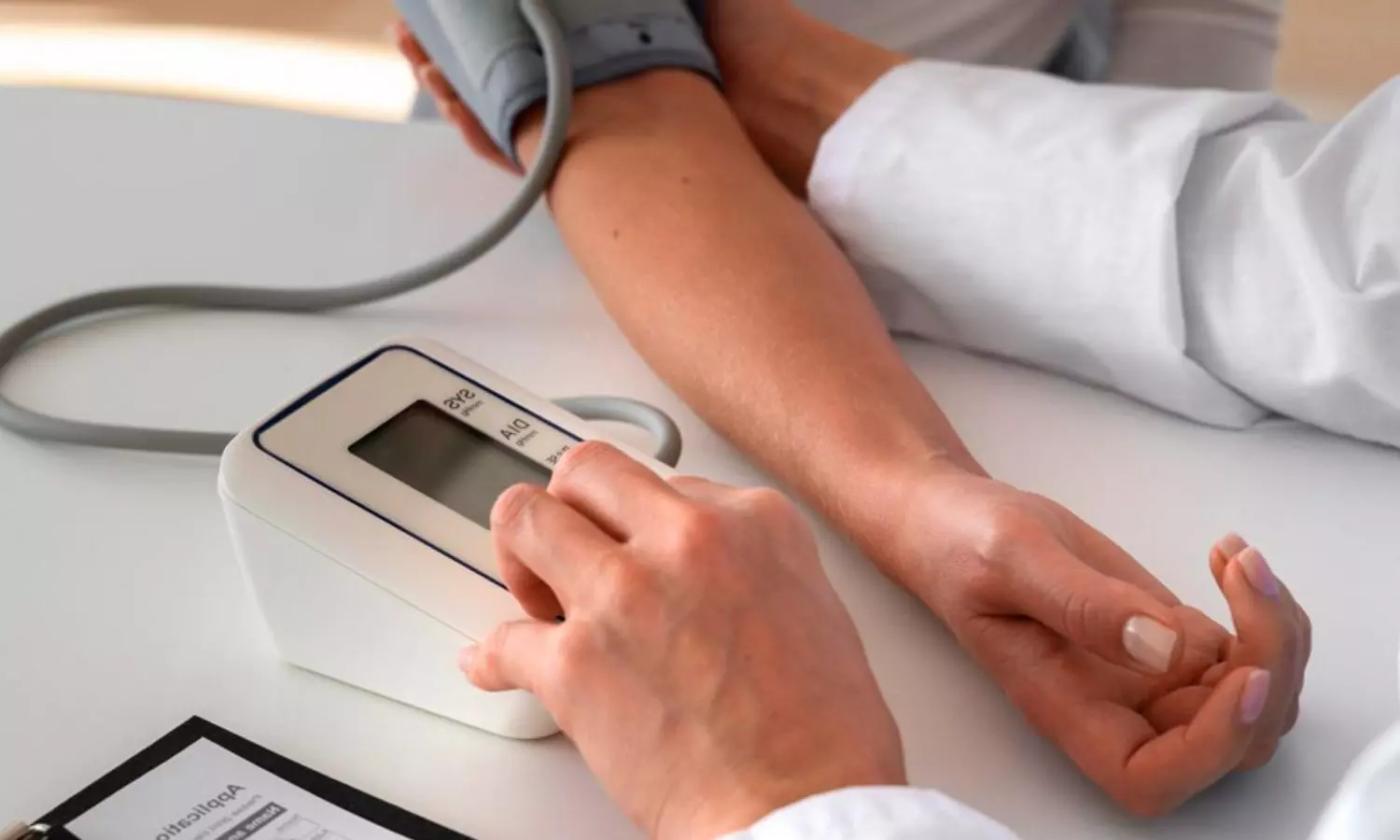Breast cancer risk in younger women may be influenced by hormone therapy
Powered by WPeMatico
Powered by WPeMatico
Powered by WPeMatico

USA: Researchers have found in a 30-year cohort study that individuals with impaired fasting glucose (IFG) in young adulthood did not always develop diabetes. However, those who eventually developed diabetes often had no prior impaired fasting glucose. These findings highlight the limitations of relying solely on IFG for early diabetes risk detection and emphasize the need for more comprehensive prevention strategies in young adults.
Published in JAMA Network Open, the study was led by Dr. Abigail R. O. Arons of the University of California, San Francisco, and her team. The analysis was based on data from the Coronary Artery Risk Development in Young Adults (CARDIA) study, which enrolled over 5,000 adults aged 18 to 30 between 1985 and 1986. Participants were followed for three decades to understand long-term glycemic trends.
Using sequence analysis, the researchers identified 1,278 unique glycemic trajectories, which they grouped into nine common patterns. These included stable normoglycemia, five distinct trajectories of IFG that did not lead to diabetes, and three diabetes patterns with onset in early, middle, and later adulthood.
The study revealed the following findings:
The researchers emphasized that the wide variation in glycemic progression underscores the need to reconsider the effectiveness of screening strategies that depend solely on IFG. Such strategies, typically developed from data in middle-aged populations, may not adequately reflect the risk profile of younger adults.
While the study offers valuable longitudinal insights, the authors acknowledged several limitations. Follow-up assessments occurred roughly every five years, meaning the exact timing of glucose changes could not be precisely tracked. The study also began when national rates of IFG and diabetes were lower than they are today, affecting the relevance of risk patterns in current populations. Additionally, the cohort comprised only Black and White participants, limiting the generalizability of the findings.
The authors concluded that, despite certain limitations, the study underscores the complex nature of diabetes progression and the need for early-life strategies to identify and manage risk. They emphasized that creating targeted screening tools and prevention efforts specifically designed for young adults could help bridge a significant gap in public health.
The researchers advocate for broader, more refined approaches that move beyond traditional IFG-based screening for more effective detection and prevention of type 2 diabetes in younger populations.
Reference:
Arons ARO, Pacca L, Jacobs DR, Vable A, Schillinger D. Thirty-Year Glycemic Trajectories From Young Adulthood Through Middle Age. JAMA Netw Open. 2025;8(6):e2517455. doi:10.1001/jamanetworkopen.2025.17455
Powered by WPeMatico

Researchers have discovered that tight blood pressure (BP) control can enhance cardiovascular risks in those with low muscle mass, but continues to provide protection to the brain. This was inferred from a new analysis of the Systolic Blood Pressure Intervention Trial (SPRINT), a groundbreaking study that sought to learn about how aggressive BP goals influence health outcomes. A recent study was conducted by Wei-Hua and fellow researchers which was published in the American Journal of Hypertension. Although tight BP control has been linked to cardiovascular and cerebral benefits in the general population, its safety profile in those with low muscle mass was not previously well understood.
The research assessed cardiovascular and cognitive outcomes in individuals with differing muscle mass. It made an important and somewhat surprising finding: for individuals with low muscle mass, very aggressive BP control might actually harm the heart. The cognitive effects of aggressive BP control were preserved, independent of muscle mass.
The authors analyzed data from 6,367 subjects who were included in the SPRINT trial. Muscle mass levels were assessed at baseline to determine those with low muscle mass, representing 7.4% of the overall sample (469 subjects). The major aim was to examine how muscle mass status affects the effects of intensive BP control, specifically cardiovascular events and cognitive impairment.
For this purpose, Cox proportional hazard models and generalized linear models were employed to compare relative and absolute risks. Landmark analyses with cutoffs at 3.4 and 2 years were used to determine the time-dependent effects of intensive BP lowering on outcomes.
Key Findings
Cardiovascular Outcomes:
In subjects with normal muscle mass, intensive BP control lowered the absolute risk of primary cardiovascular events by 5.2 events per 1,000 person-years (Hazard Ratio [HR]: 0.71; 95% Confidence Interval [CI]: 0.58–0.89).
Subjects with low muscle mass had an increase in cardiovascular events by 11.1 per 1,000 person-years (HR: 1.72; 95% CI: 0.89–3.34), suggesting potential harm (P for interaction = 0.013).
The higher CV risk in the low muscle mass group became statistically significant with 3.4 years of intensive BP control (P = 0.043).
Cognitive Outcomes:
Irrespective of muscle mass, intensive BP control lowered relative and absolute risks for cognitive decline, without significant interaction between muscle mass status and cognitive gains (all P values for interaction > 0.05).
The research determines that strict BP control enhances cardiovascular risk among individuals with low muscle mass, regardless of its beneficial impact on cognition. This information highlights the need for personalized hypertension treatment strategies, particularly in older or frail individuals whose muscle mass could be reduced.
Reference:
Powered by WPeMatico

South Korea: A new multicenter study from South Korea has identified critical risk factors contributing to the development of chronic obstructive pulmonary disease (COPD) in individuals treated for tuberculosis (TB), emphasizing the need for long-term respiratory monitoring. Published in the International Journal of Chronic Obstructive Pulmonary Disease, the research was led by Dr. Dong-Hyun Joo and colleagues from the Seoul National University Bundang Hospital. It sheds light on the incidence and predictors of TB-associated COPD over an extended follow-up period.
The study followed 351 patients across four Korean hospitals who had received anti-tuberculosis treatment for more than six months. These individuals were monitored over 11 years (132 months) to determine the incidence and risk factors for COPD following TB treatment. Data collection included clinical records, radiologic evaluations, and lung function tests, with statistical analyses conducted to assess incidence trends and identify predictive factors.
Over the study period, 71 participants were diagnosed with TB-associated COPD, corresponding to an overall incidence of 20.56 cases per 1,000 person-years. Patients who developed COPD were generally older at the time of their TB diagnosis, had a history of smoking, and demonstrated lower baseline lung function, particularly reduced forced expiratory volume in one second (FEV₁) and FEV₁/forced vital capacity ratios.
Key Findings:
These findings emphasize the long-term pulmonary implications of TB, especially for individuals with compromised lung function or additional risk exposures. While the incidence declines more than a decade after treatment, the risk remains significant during the early post-treatment years, calling for targeted respiratory surveillance.
The study’s authors acknowledged certain limitations. COPD diagnosis was based solely on a fixed FEV₁/FVC ratio threshold (<0.7) without incorporating clinical symptoms. A few patients (2.2%) underwent spirometry without bronchodilator use, and CT scans were interpreted independently at each hospital without centralized review, potentially introducing variability.
Despite these constraints, the findings highlight the need for long-term lung function monitoring among high-risk TB survivors. The authors advocate for routine spirometry assessments for at least 11 years following TB treatment, especially in older patients, smokers, or those presenting with extensive lung involvement.
The authors concluded, “Further prospective studies with standardized imaging and extended follow-up are necessary to refine screening protocols and guide early interventions for TB-related COPD, ultimately aiming to reduce the burden of chronic respiratory disease in this vulnerable population.”
Reference:
Joo DH, Kim MC, Sin S, Kang HR, Song JH, Kim HJ, Song MJ, Kwon BS, Kim YW, Lee YJ, Park JS, Lee JH, Lee YJ. Incidence and Risk Factors of Tuberculosis-Associated Chronic Obstructive Pulmonary Disease. Int J Chron Obstruct Pulmon Dis. 2025;20:2091-2102
https://doi.org/10.2147/COPD.S523732
Powered by WPeMatico

USA: A new study published in The Laryngoscope has revealed a compelling link between hearing loss and depression, emphasizing the broader mental health implications of auditory impairment. Conducted by Dr. Justin S. Golub and colleagues from the Department of Otolaryngology—Head and Neck Surgery at Columbia University Vagelos College of Physicians and Surgeons, the study used data from the massive, federally initiated All of Us Research Program.
The research involved a cross-sectional analysis of 375,438 adults aged 18 years and older. Bilateral sensorineural hearing loss (SNHL) was identified using the ICD-10 code H90.3, and the mental health outcomes analyzed were major depressive disorder (F32–F33) and dysthymia (F34.1). Statistical analyses evaluated the odds of these conditions in individuals with and without hearing loss while adjusting for variables such as age, sex, race, ethnicity, education, hypertension, and type 2 diabetes.
Key findings were as follows:
“Bilateral SNHL was strongly associated with both major depressive disorder and dysthymia,” the authors reported. “This association remained significant even after adjusting for key demographic and clinical variables, suggesting that the link between hearing loss and mental health disorders is not merely due to age or other medical conditions.”
The findings support a growing body of literature that emphasizes the emotional and psychological consequences of untreated hearing loss. The large and diverse sample in the All of Us Research Program allowed for more generalizable insights into this relationship, which the authors believe has often been overlooked in public health discourse.
“Our results highlight the importance of recognizing hearing loss as a potential contributor to mental health issues,” the researchers emphasized. “With the odds of depression and dysthymia significantly elevated, clinicians should consider routine hearing assessments in individuals presenting with mood disorders—and vice versa.”
They further suggested that future research should include stratified analyses across subgroups to explore the impact of race, socioeconomic status, and severity of hearing loss on mental health outcomes.
“The study reinforces the need for integrated care approaches that address both hearing and psychological well-being, aiming to improve overall quality of life for those affected,” the authors concluded.
Reference:
W. Weinstein, H. N., Tucker, L. H., Denham, M. W., Brewster, K. K., & Golub, J. S. Hearing Loss Is Associated With Depression and Dysthymia in the All of Us Research Program. The Laryngoscope. https://doi.org/10.1002/lary.32369
Powered by WPeMatico

A new study published in the Journal of American Medical Association showed that the prevalence of physical and mental comorbidities was greater in children with hidradenitis suppurativa.
Many children suffer from hidradenitis suppurativa (HS), a chronic, inflammatory skin condition marked by painful nodules in intertriginous areas. Comorbidities, including metabolic and behavioral diseases, might negatively affect the quality of life for a considerable number of individuals with pediatric-onset HS. HS is characterized by twin comedones and painful subcutaneous nodules. Thus, Samiha Mohsen and colleagues carried out this investigation to ascertain the total pooled prevalence of comorbidities in pediatric patients with HS as well as to assess the relationship between HS and pertinent comorbidities in pediatric patients.
On February 20, 2025, the Cochrane Central Register, PubMed/MEDLINE, and Embase were searched without limitations from the beginning of the database. Included were original studies that documented the prevalence of pediatric HS or its correlation with comorbidities. Key search phrases for pediatric HS and other comorbidity categories were included in the search.
The degree of evidence certainty was evaluated using the Grading of Recommendations Assessment, Development and Evaluation (GRADE) methodology. Random-effects modeling was used to pool the data. To determine pooled prevalence rates, meta-analyses of proportions were performed, classifying the data according to certain comorbidities (such as obesity, anxiety, overweight, and others).
There were 19 trials in all, including 17,267 pediatric HS cases and 8,259,944 controls. The majority of pediatric HS patients in the trials were female (mean of 76.7% [11,683 of 15,232]). Comorbidities that were most common included hirsutism (pooled percentage, 14%; 95% CI, 6-21), anxiety (pooled proportion, 18%; 95% CI, 4-31), obesity (pooled proportion, 37%; 95% CI, 27-46), and acne vulgaris (pooled proportion, 43%; 95% CI, 21-65).
3 research studies found a correlation between childhood HS and diabetes (GRADE: low certainty), whereas many studies found a correlation between pediatric HS and obesity or depression (GRADE: moderate certainty). Overall, a multidisciplinary approach may be beneficial, as evidenced by the higher frequency of chronic medical and psychological comorbidities among juvenile patients with HS in this research.
Source:
Mohsen, S. T., Price, E. L., Lara-Corrales, I., Levy, R., & Sibbald, C. (2025). Prevalence of comorbidities among pediatric patients with hidradenitis suppurativa: A meta-analysis. JAMA Dermatology (Chicago, Ill.). https://doi.org/10.1001/jamadermatol.2025.1565
Powered by WPeMatico

A new study published in the Nature Mental Health revealed that psychological therapy significantly improves mental health outcomes for stroke survivors, particularly when treatment is initiated early.
According to this NHS Talking Therapies program in England, more than one in 3 stroke survivors struggle with depression or anxiety. However, psychological support is often underutilized or delayed in this population. The research analyzed real-world clinical data from 7,597 patients who had previously suffered a stroke, and offers the strongest evidence to date that timely mental health intervention is crucial in post-stroke recovery.
The study found that stroke survivors who received psychological therapy experienced moderate reductions in depressive symptoms and substantial reductions in anxiety. These results reinforce the importance of mental health support as part of stroke rehabilitation.
The patients who began therapy within 6 months of their stroke were far more likely to experience reliable recovery from their mental health symptoms than those who started treatment a year or more after the event. This trend held true even when controlling for variables such as age, gender, socioeconomic status, and baseline severity of symptoms.
This research compared stroke survivors to a matched control group of patients without a stroke history. While both groups showed improvement following therapy, stroke survivors were less likely to achieve reliable recovery and more likely to experience worsening symptoms. However, this disparity narrowed when physical comorbidities were taken into account.
Stroke survivors were less likely to achieve what the study defined as “reliable recovery” in their symptoms of depression or anxiety compared to non-stroke patients, suggesting a unique vulnerability in this group. Also, there was a slightly higher risk of “reliable deterioration” (a significant worsening of symptoms) in stroke survivors, underlining the need for close monitoring.
The patients referred within 6 months of stroke had better recovery rates and lower deterioration than those referred after a year. When adjusting for physical health conditions, the gap in outcomes between stroke and non-stroke patients narrowed, highlighting the complex interplay between physical and mental health.
These findings demonstrates the real-world effectiveness of psychological therapies for stroke survivors and the critical importance of early referral. With mental health proving to be a vital component of recovery, timely therapy could be the difference between long-term struggle and meaningful improvement in quality of life in stroke survivors.
Source:
Suh, J. W., Bell, V., Buckman, J. E. J., El Baou, C., Desai, R., Fearn, C., Marchant, N. L., Richards, M., Cooper, C., Pilling, S., John, A., Stott, J., & Saunders, R. (2025). A record-linkage study of post-stroke primary care psychological therapy effectiveness in England. Nature Mental Health, 3(6), 626–635. https://doi.org/10.1038/s44220-025-00429-z
Powered by WPeMatico

Thickening of the macular layer of the eye’s retina is associated with a greater risk of postoperative delirium for older patients undergoing surgery under general anaesthetic, reveals a study published online in the open access journal General Psychiatry.
Postoperative delirium is one of the most common complications for older patients after surgery and can have profound implications for long-term health and wellbeing.
Patients with postoperative delirium require longer hospital stays and are more likely to require support at home to help with daily tasks such as washing, dressing, and eating or be discharged into a nursing home. They also face a greater risk of cognitive decline and dementia.
Although there are no simple tests to identify patients at risk of developing postoperative delirium, visual impairment is a risk factor, so the authors set out to determine whether a thickened retinal layer called the macular might be a potential biomarker of the condition.
The study included 169 patients aged 65 years or more scheduled for hip or knee replacements, kidney or prostate surgery under general anaesthetic at Shanghai 10th People’s Hospital who received an eye imaging test called optical coherence tomography (OCT) as part of their preoperative assessment to measure the thickness of the macular of the retina. Patients were screened for delirium using the Confusion Assessment Method (CAM) algorithm each day for the first three days post-surgery.
Severity of any delirium was measured using the CAM-Severity (CAM-S) rating of ten delirium features, including inattention, disorganised thinking, disorientation, reduced quality and amount of sleep, inability to sit still accompanied by anxiety, or slowed movement and thought processes.
Forty patients (24%) developed postoperative delirium, and these patients had displayed a greater mean macular thickness (283.35 µm) of the right eye at their preoperative assessment than the patients who did not experience postoperative delirium (273.84 µm). After adjusting for age, sex and mental state, greater preoperative macular thickness of the right eye was associated with 1.593 higher odds of developing postoperative delirium and the delirium experienced was of greater severity.
Thickness of the macular in patients with postoperative delirium was greater in the right eye, and thickening of the macular of the left eye was not associated with a greater risk of postoperative delirium.
The reasons for the differences in association observed between the right and left eye are unclear, the authors say, but are consistent with findings from previous studies. Studies of healthy individuals have found the mean macular thickness of the right eye to be thicker than that of the left eye, and studies of neurodegeneration have reported asymmetrical neurodegeneration of both the retina and brain.
This is an observational study, and as such, no firm conclusions can be drawn about cause and effect. The authors also acknowledge that the study has some limitations, including its small size and that potential confounding factors, such as pre-existing eye dominance, were not examined.
The authors conclude, “Our findings suggest that macular thickness measured by OCT may serve as a non-invasive marker and identify individuals vulnerable to developing postoperative delirium after anaesthesia and surgery among geriatric patients.”
They add, “Further large-scale validation studies should be performed to confirm these results.”
Reference:
Zhongyong Shi, Xin Ma, Tianyi Tang, Association between retinal layer thickness and postoperative delirium in older patients, General Psychiatry, DOI:10.1136/gpsych-2024-101740
Powered by WPeMatico

USA: New guidance outlines strategies for safely tapering benzodiazepine use when risks outweigh benefits. The recommendations emphasize individualized tapering plans based on patient response, the use of psychosocial interventions to ease withdrawal, and ongoing reassessment of therapy risks and benefits. Shared decision-making between clinicians and patients or care partners is strongly advised throughout the process.
The Journal of General Internal Medicine recently published a joint clinical practice guideline developed by the American Society of Addiction Medicine (ASAM) in collaboration with nine other medical societies and professional organizations. The guideline offers structured, evidence-informed recommendations for tapering benzodiazepines (BZDs) in adult patients who may be physically dependent and for whom continued use may pose greater harm than benefit.
This multi-society collaboration utilized modified GRADE methodology and clinical consensus to formulate its recommendations. The process included a comprehensive review of existing literature, supplemental searches, and a robust stakeholder feedback system.
Given the limited number of high-quality studies on BZD tapering strategies, most of the recommendations are based on clinical expertise and experience rather than randomized controlled trials. Nonetheless, the guideline provides a much-needed framework for healthcare providers navigating the complex process of benzodiazepine discontinuation, particularly in vulnerable populations.
Key Recommendations for Benzodiazepine Tapering:
Despite the lack of robust controlled studies on benzodiazepine tapering, this guideline fills a critical gap by offering a structured, consensus-based approach for clinicians. It also calls for further research to strengthen the evidence base and optimize patient safety and outcomes in BZD management.
Reference:
Brunner, E., Chen, CY.A., Klein, T. et al. Joint Clinical Practice Guideline on Benzodiazepine Tapering: Considerations When Risks Outweigh Benefits. J GEN INTERN MED (2025). https://doi.org/10.1007/s11606-025-09499-2
Powered by WPeMatico
